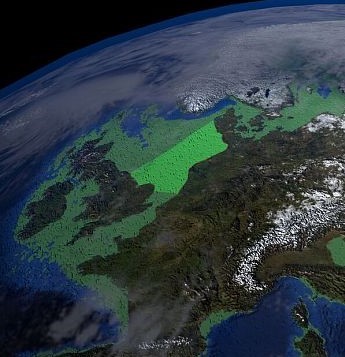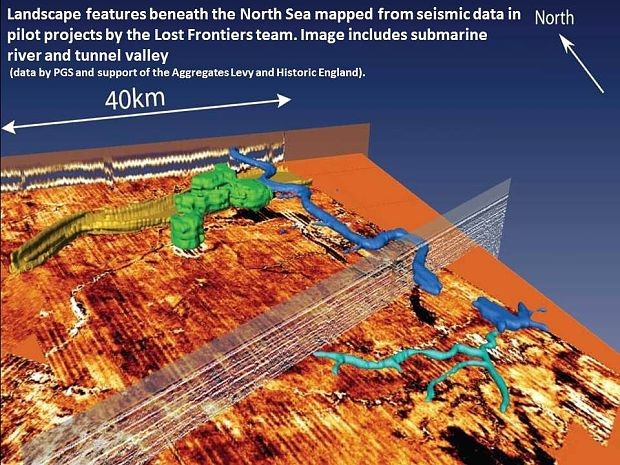Doggerland to be digitally repopulated

Archaeologists will be taking deep sea core samples to find the DNA of Doggerland to reconstruct the environment
Using modern genetics and computing technologies researchers will digitally repopulate this ancient country, called Doggerland, monitoring its development over 5000 years to reveal important clues about how our ancestors made the critical move from hunter-gathering into farming.

An underwater map showing rivers that would have run through Doggerland
The team will be using the vast remote sensing data sets generated by energy companies to reconstruct the past landscape now covered by the sea. This will help to produce a detailed 3D map that will show rivers, lakes, hills and coastlines in a country which had previously been a heartland of human occupation in Europe but was lost to the sea as a consequence of past climate change, melting ice caps and rising sea levels.
Alongside this work, specialist survey ships will recover core sediment samples from selected areas of the landscape. Uniquely, the project team will use the sediments to extract millions of fragments of ancient DNA from plants and animals that occupied Europe’s ancient coastal plains. The cool, underwater environment means that DNA is better preserved here and offers archaeologists a unique view of how society and environment evolved during a period of catastrophic climate change and in a prehistoric country that had previously been lost to science and history.
The data from seismic mapping and sedimentary DNA, along with conventional environmental analysis, will be combined within computer simulations, using a technique called ‘agent-based modelling, that will build a comprehensive picture showing the dynamic interaction between the environment and the animals and plants that inhabit it throughout the period – around 5000 years.
“This project is exciting not only because of what it will reveal about Doggerland, but because it gives us a whole new way of approaching the massive areas of land that were populated by humans but which now lie beneath the sea. This project will develop technologies and methodologies that archaeologists around the world can use to explore similar landscapes including those around the Americas and in South East Asia,” adds Professor Gaffney.
The project is led by Professor Gaffney, and the research team includes Professor Robin Allaby at the University of Warwick, Dr Martin Bates from the University of Wales Trinity St David, Dr Richard Bates from the University of St Andrews, Dr Eugene Ch’ng at the University of Nottingham, Dr David Smith at the University of Birmingham and independent researcher, Dr Simon Fitch.

